Key takeaways:
- Data presentation should tell a story that resonates with the audience, transforming complex information into relatable insights.
- Using visuals, like infographics and dashboards, enhances understanding and keeps the audience engaged.
- Interactive elements and simplicity in presentations foster participation and clarity, making key points more memorable.
- Collaboration and inviting questions during presentations lead to deeper insights and a richer understanding of the data.
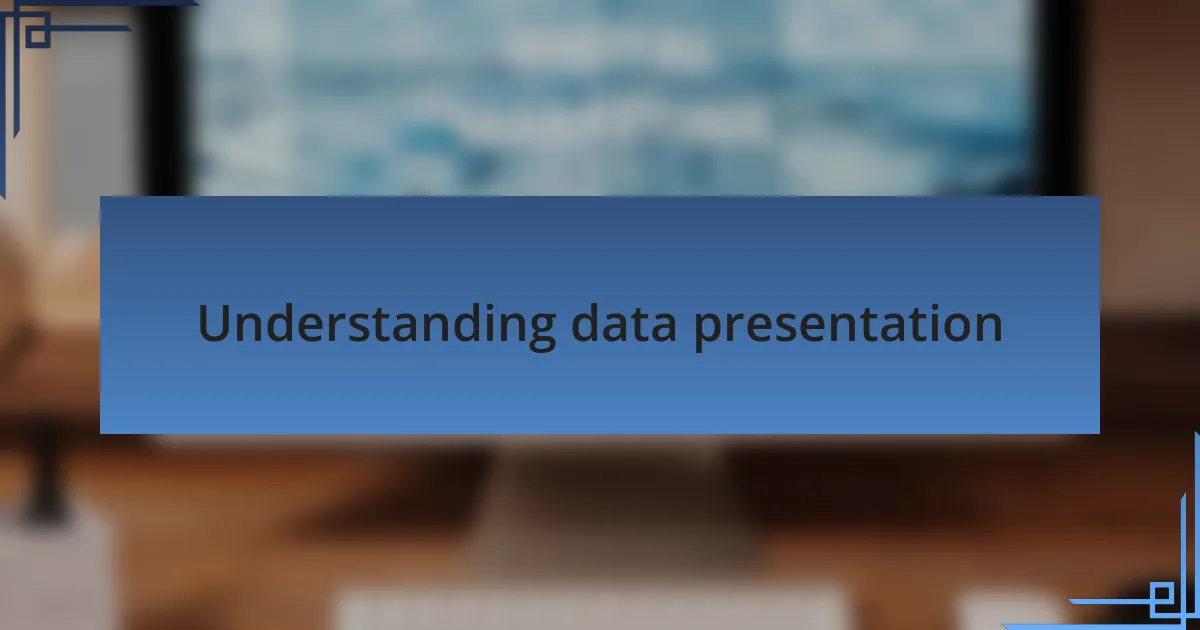
Understanding data presentation
Understanding data presentation is about more than just creating appealing visuals; it’s about crafting a narrative that resonates with your audience. I remember the first time I presented data to a client—it felt overwhelming, but then I realized that connecting those numbers to their story was key. How often do we get lost in charts without understanding the ‘why’ behind them?
Clarity is paramount in data presentation. When I simplify complex data into clear, bite-sized pieces, I can see how it unlocks understanding and engages the audience. Have you ever struggled to interpret a dense report? I can relate. In my experience, using straightforward language and relatable examples makes the data more approachable and memorable.
In my journey, I’ve found that tools like color coding and infographics breathe life into raw numbers. I once used a heat map for a campaign analysis and saw how it engaged my team instantly. Have you noticed how certain formats can grab attention more effectively than others? It’s a game-changer for making data not just seen, but truly understood.

Importance of data in marketing
Data is the backbone of effective marketing strategies. Without it, decisions risk being based on hunches rather than facts. I’ve seen firsthand how client campaigns were transformed when we integrated data-driven insights into their strategies. It was eye-opening to witness a shift from guesswork to informed decisions that delivered tangible results.
One of my most revealing experiences came when analyzing customer behavior data for a recent campaign. By segmenting our audience based on their purchasing patterns, we crafted tailored messages that resonated on a deeper level. It was incredible to see how a data-backed approach not only boosted engagement but also fostered genuine connections with our audience. Have you ever pinpointed your customers’ needs using data? It opens doors to greater understanding.
Furthermore, tracking performance metrics is essential to adapt and innovate. I often look at campaign analytics mid-course to pivot strategies, and it’s been instrumental in optimizing results. The ability to see what works and what doesn’t in real-time empowers marketers to refine their efforts. Isn’t it fascinating how data can drive creativity in marketing? It surely has for me.
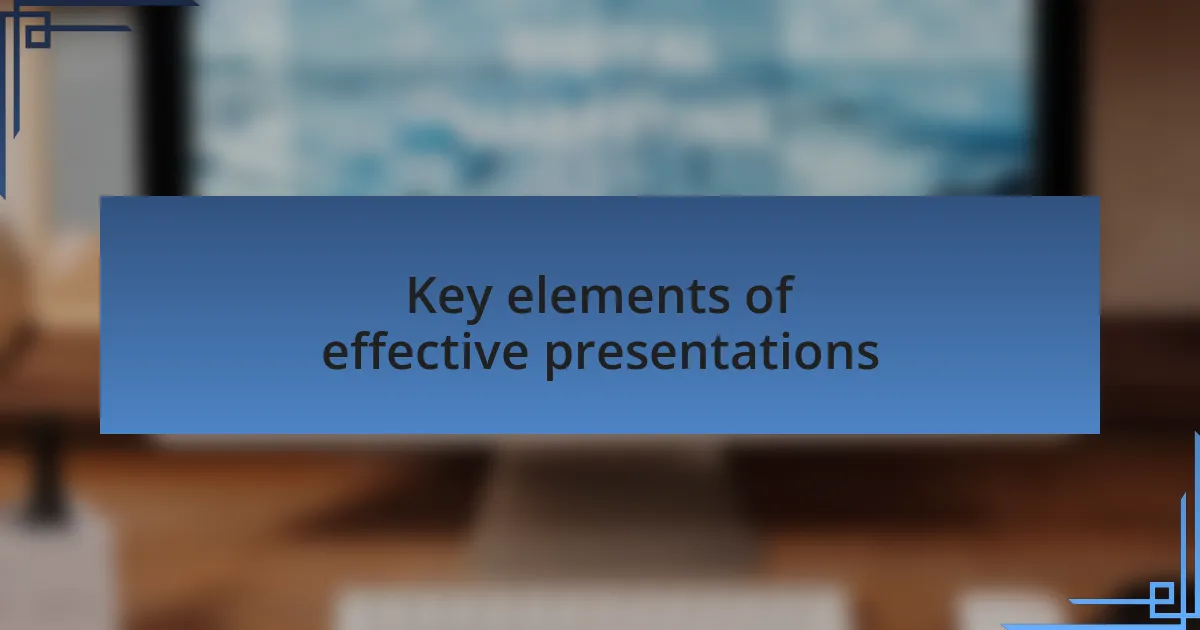
Key elements of effective presentations
An effective presentation starts with a clear objective. Knowing what you want to achieve helps shape the overall narrative. I recall a time when I presented data to a client without a focused message. The result? Confusion rather than clarity. Since then, I’ve emphasized the importance of defining a specific goal for each presentation.
Visual aids play a crucial role in keeping the audience engaged. I’ve found that well-designed charts and infographics can simplify complex data. For instance, during a recent pitch, I used a visual timeline that illustrated our campaign’s evolution. It was amazing to see how the visuals transformed the discussion, sparking interest and compelling questions from the audience.
Lastly, storytelling is an often-overlooked element in data presentation. Integrating a narrative around data makes the information relatable and memorable. I’ve shared stories of real customers impacted by our strategies, which created an emotional connection that numbers alone often lack. Have you ever connected with an audience through a story? It can truly enhance understanding and retention.
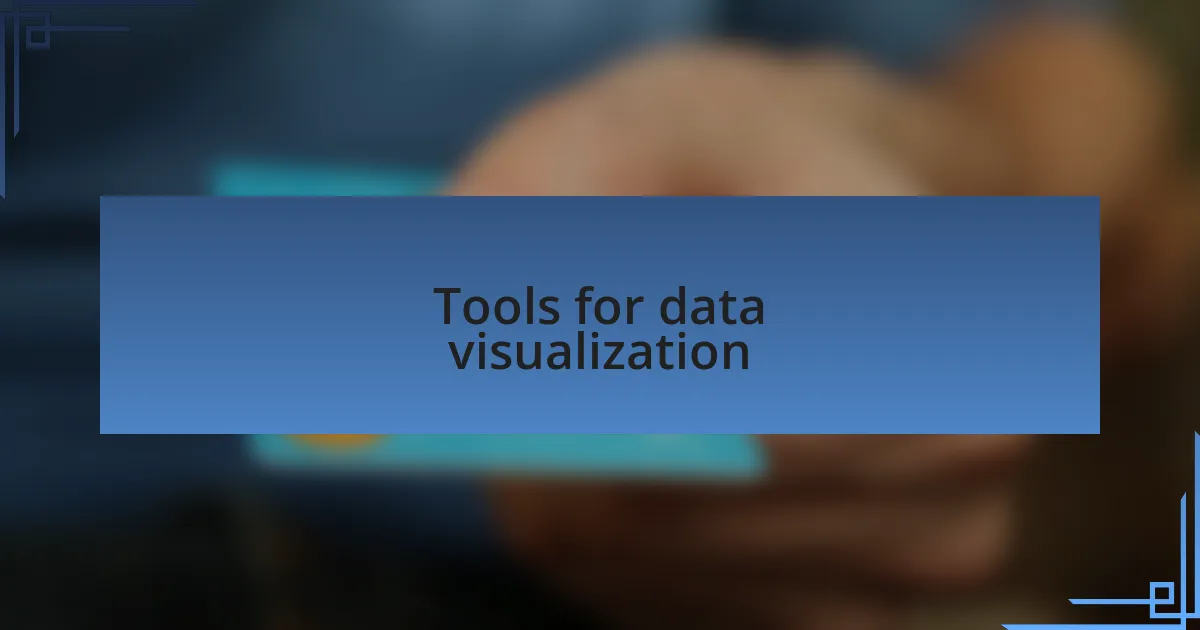
Tools for data visualization
When it comes to tools for data visualization, I often turn to platforms like Tableau and Google Data Studio. These tools have been game-changers for me. They offer user-friendly interfaces and powerful capabilities that transform raw data into interactive visuals. I remember working on a project where data sets were overwhelming, but using Tableau helped me present insights that resonated with my audience. Have you ever felt overwhelmed by data? Finding the right tool can really ease that burden.
I also can’t stress enough the value of using infographics. Platforms like Canva or Piktochart make it easy to create engaging visuals that tell a story. I once had a client who needed to simplify a complex report. By transforming the key findings into an infographic, not only did the information become digestible, but it also sparked a productive discussion during our meeting. Do you think visuals can change perspectives? I certainly believe they can.
Lastly, I’ve found that incorporating real-time dashboards through tools like Microsoft Power BI brings a dynamic element to presentations. While preparing for a recent campaign review, I utilized a dashboard to showcase live performance metrics. The instant feedback from the visuals facilitated a deeper conversation about strategies and adjustments needed on the fly. Isn’t it remarkable how real-time data can keep everyone on the same page? It’s these moments that underline the power of effective data visualization tools.
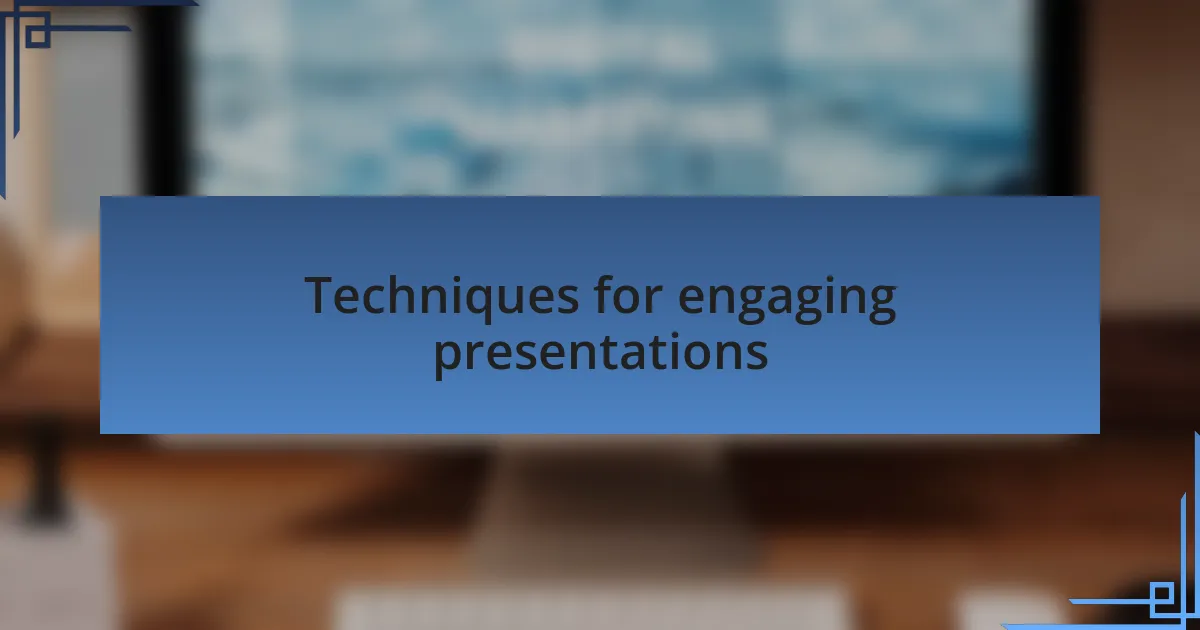
Techniques for engaging presentations
Engaging presentations go beyond just data; they require storytelling to captivate your audience. I recall a presentation where I weaved a narrative around the data, using a relatable analogy to connect the numbers to real-world experiences. By framing the data as part of a larger story, I kept my audience invested, and I noticed their expressions change from confusion to understanding. Has a story ever helped you grasp a complex concept?
Another technique I’ve embraced is the use of interactive elements. For example, during a recent webinar, I included polls and quizzes to break the monotony and invite audience participation. The moment I saw participants actively engaging with live feedback, it felt like we were having a conversation instead of a one-sided lecture. Isn’t it interesting how involvement can transform the atmosphere of a presentation?
Visual aids are essential, but I believe that simplicity is paramount. I once delivered a presentation with slides that were cluttered and overwhelming, and I observed firsthand how it distracted my audience. After that experience, I shifted to a minimalist approach. Each slide now features fewer words and more visuals, allowing me to speak freely while directing attention to key points. Wouldn’t you agree that less can sometimes be more in communication?

Personal strategies for data presentation
When it comes to presenting data, I find that personal relevance is key. I often start by sharing why a particular dataset matters to me or my agency’s goals. For instance, in a recent client meeting, I highlighted how customer feedback directly influenced our product strategy, connecting the data to real-life implications. This approach not only fosters a deeper understanding but also creates a sense of ownership among my audience. Have you ever thought about how emotional connections with data can enhance its impact?
Another strategy I embrace is the use of comparisons to highlight trends. During a quarterly review, I showcased two data sets side by side: customer engagement before and after a marketing campaign. This visual juxtaposition led to “aha” moments for my team, illustrating not just the numbers but the story of our progress. It’s fascinating how seeing the contrast can illuminate patterns that might otherwise go unnoticed. Has a simple comparison ever changed your perspective on a set of data?
Additionally, I always invite questions throughout my presentations. Once, while discussing analytics, someone asked for clarification on a specific metric, and it led to a rich discussion that unveiled insights we hadn’t considered. Encouraging this dialogue transforms the presentation from a monologue into an exchange of ideas, making everyone feel valued and included. Isn’t it amazing how a single question can deepen understanding?
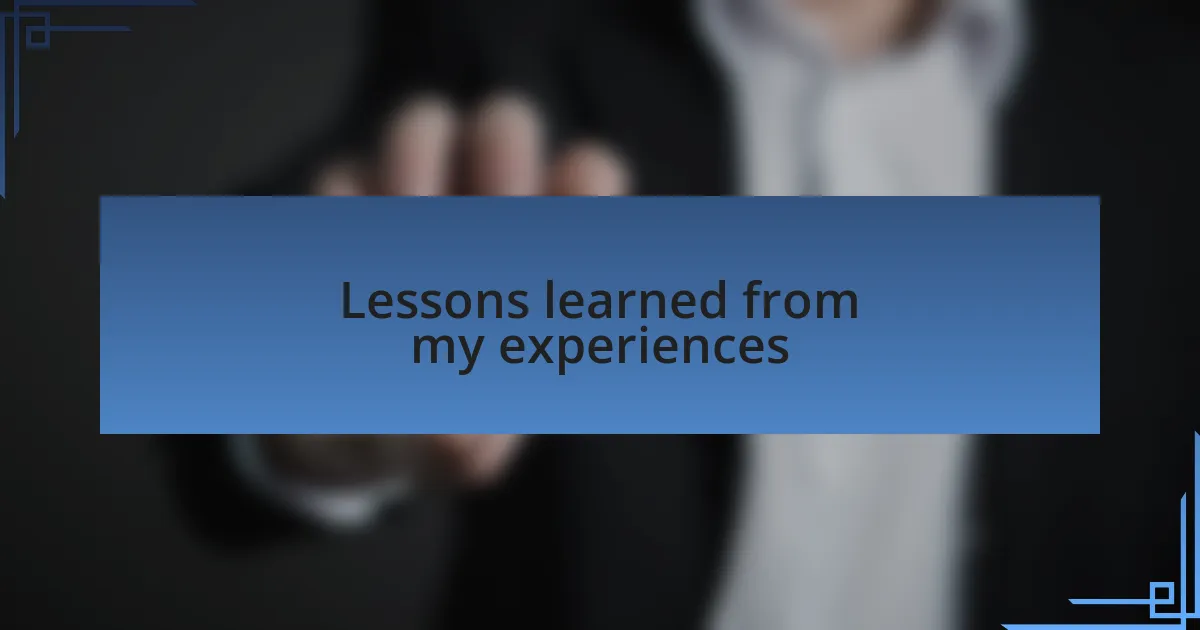
Lessons learned from my experiences
Reflecting on my journey in data presentation, one lesson has been the importance of storytelling. I recall a project where I needed to convey user engagement metrics. Instead of simply presenting the numbers, I crafted a narrative around a specific customer journey. By showing how our changes impacted a real person’s experience, the data came alive. Isn’t it fascinating how a good story can breathe life into what might otherwise seem like dry statistics?
Another pivotal lesson came when I realized the impact of simplicity. In one memorable presentation, I opted for minimalistic visuals to avoid overwhelming my audience. I focused on a few key metrics that directly aligned with our objectives. It turned out that stripping away the excess allowed for clearer insights and sparked engaging conversations about next steps. Have you ever noticed how less can sometimes mean more in conveying ideas?
Lastly, I’ve learned that collaboration during data discussions can lead to unexpected discoveries. In a brainstorming session, we analyzed a dataset together, and someone pointed out a detail I’d overlooked. That moment opened up a conversation about potential strategies we had never considered. It made me realize how collaborative efforts can deepen our understanding of data. How often do you think we miss critical insights by not including others in the conversation?